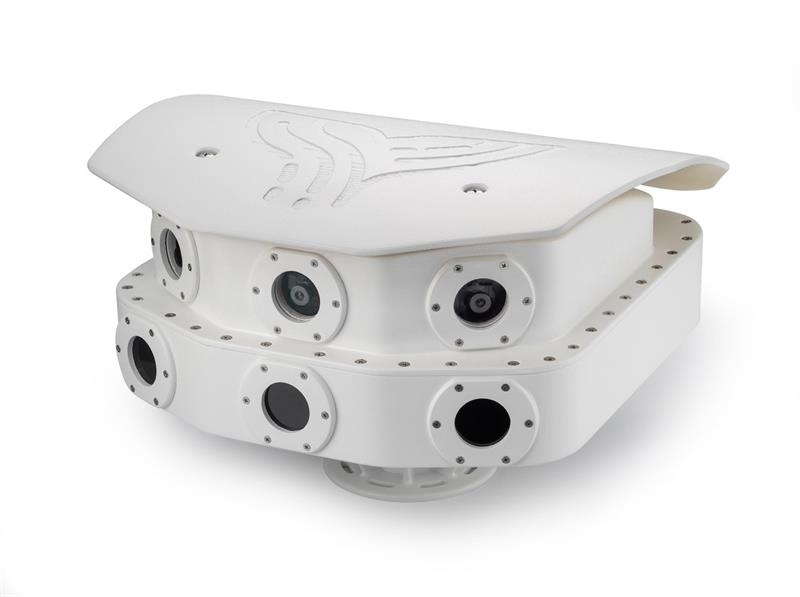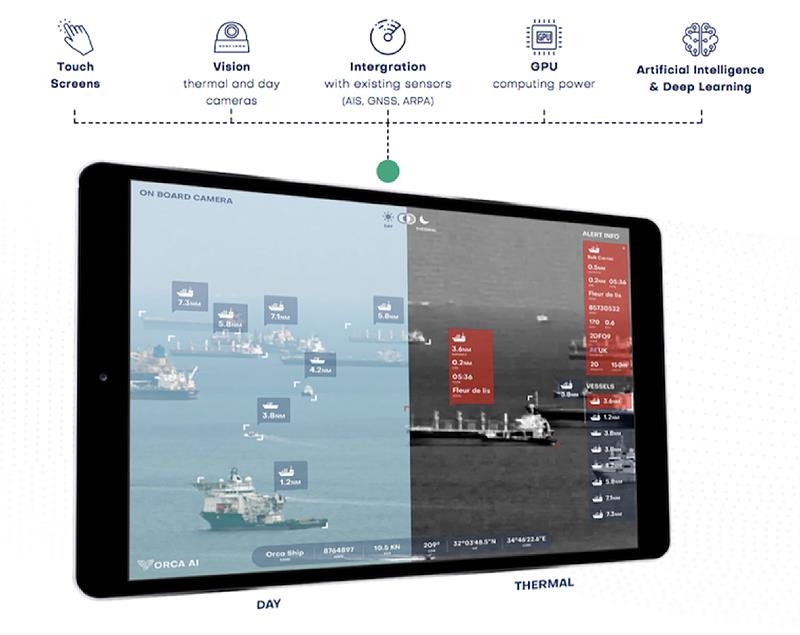Both men, who served in the Israeli navy, have experience of working with drones, deep learning and in algorithm development and, in the case of Raviv the company’s CTO, bring a passion for the sea that started at a very young age and which saw him sail around the world with his family.
Raviv brings extensive experience as a deep learning engineer at companies like Cortica and Orcam. During his time with the Israeli Navy he was selected as the service’s first project leader for autonomous systems.
“I was a navigation instructor and ended up leading the navy’s unmanned autonomous division as part of my mandatory military service,” he explains.
According to Raviv, despite the technological advances that are being made in other industries the shipping industry is a laggard, in part because the navigation and collision avoidance technology needs to be specifically suited to the industry but also because of the innate conservatism of the industry.
“Orca AI was set up to address the safety and operational issues around shipping. If you look at the level of congestion in international waters today, you can appreciate the issue and the dangers involved. Not only that, the crews employed tend to be less experienced, so there’s a need for improved navigation tools, in particular for operating ships near to shore or in very congested waterways,” Raviv explains. He continues, “There’s no way you can birth a ship without the help of visual tools.”
Current data emitting sensors require skilled professionals to analyse the data in order to understand it accurately and it was that challenge which caused both men to create the company.
The marine industry is open to new advances in technology, but too many ship owners are not yet ready to embrace it.
“The market is in flux, but technology is beginning to make some inroads,” Raviv suggests. “Many shipping companies now have a technology division which makes it easier for technology companies to engage with them, explain the benefits of the technology and, crucially, the types of return on investment that they are likely to see.”
According to Raviv, ship owners are hesitant about relinquishing control of their vessels to autonomous solutions, as they still trust their captains and crews more than they do the technology.
“That has certainly had an impact in terms of adopting the anti-collision technology that Orca AI is promoting,” he admits.
However, as there are currently over 3,000 marine collisions each year and more than 75% are due to errors in human judgment, it suggests that current navigational tools are overly reliant on human judgment which can result in the making of costly errors.
“While the focus is on increasing safety and reliability our technology will also make shipping more efficient and reduce running costs, so there’s an economic value to it as well,” according to Raviv. “Our vision is to reduce human-caused errors through intelligent automated vessels.”
The technology is suitable for all types of ship and, crucially, with every vessel connected to the network it is possible for collaborative or fleet learning to take place.

Orca AI combines cameras with sensors to help bring safer navigation to shipping
“Empowered by artificial intelligence, every ship is able to communicate, so learning is continuous. As each ship enters or leaves a port, for example, data is transmitted via our data links, labelled, trained and then deployed across the entire fleet.”
Ease of deployment
In part to overcome the maritime industry’s fear of new technology, the Orca AI system has been designed to be, “a tool that the crew can use, not something that replaces it.”
According to Raviv, “We wanted a solution that would help ships use AI safely in zero and extremely low visibility conditions and in crowded waterways. It looks to minimise errors in judgment, reducing the chances of collisions.”
Interestingly, Raviv talks about the importance of sharing data and points at how the automotive industry is embracing greater collaboration. The maritime industry has no real knowledge of how data can affect capabilities and what it could be used for.
“The more data we can generate and process, the better the system. The more variability you have, the more reliable the system will be.”
Raviv points out that you cannot simply change the operational methodology used in the industry.
“When it comes to technology you need to demonstrate it in a reliable and intuitive way and that doesn’t impact current operations. We are adding to existing navigational tools, not replacing them.”
As a result Orca AI takes a ‘plug and play’ approach when it comes to installation, which takes around six hours and, according to Raviv, is easy to integrate with existing technology on the bridge, so the age and size of the ship has no impact on the process.
The system uses sensors, already deployed on board, and then adds thermal and low-light cameras, feeding information into an AI-powered navigation system.
“The system is easy to use and gives the crew manning the bridge, and who are occupied with a myriad of responsibilities, the ability to make smarter navigation decisions.
“Visibility is the main issue that we are looking to address and to that end our sensors are designed for situations with poor visibility.”
“The crew will be using a real time video stream and an interface that is able to locate and identify objects – from buoys to small sailing boats.”
Orca AI has been installed and piloted on board several car carriers owned by Ray Carriers, the company’s first client and a key investor. The data that has been created is currently being analysed before being deployed.
“AI is a tool for solving problems and for the maritime industry, it is enabling us to tackle issues such as detection of ships and other items on the water as well as alerting and assisting the captain and the crew with the navigation of the ship.”

Orca AI provides an interface that is able to identify ships, buoys and other objects in congested waterways
Raviv points to how AI is being used to solve problems beyond that of navigation and including the likes of logistics, predictive maintenance, and internal operations.
Looking to the future Raviv is doubtful that we’ll ever see fully autonomous vessels – issues around liability and regulation need to be addressed first, but the technology is evolving, and it really is just a matter of collecting data and learning from it.
Several autonomous ship projects are being developed around the world and Raviv points to the UK, Scandinavia and the Netherlands as countries investing in the technology.
Orca AI itself is in discussions with a number of large technology providers who are looking to build an eco-system to support the future development of autonomous ships.
AI is becoming more important for the maritime industry and Raviv believes that it is already proving examples of real added value in terms of greater efficiency and better safety.
“Many crucial pieces make up a fully autonomous vessel and Orca AI is looking to provide just part of what is a very complex set of technologies.”













